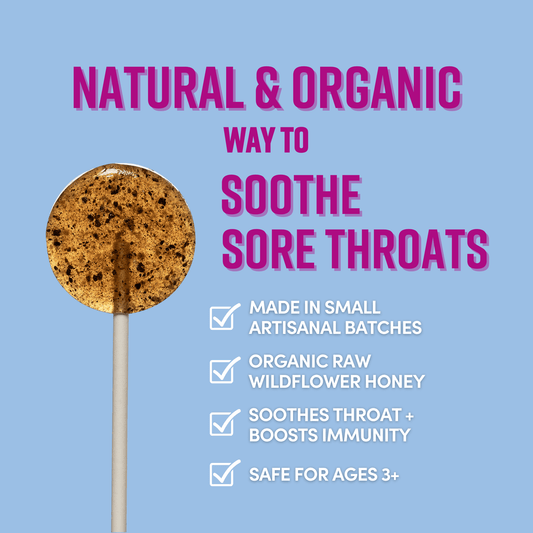Flying. Ugh. For some people, it's exciting, but for me, and maybe for you, the thought of getting on a plane is just... a lot. It’s not just nerves. It's that stomach-dropping, heart-pounding feeling that can start days before you even see the airport. It's a real, physical thing—nausea, anxiety, sometimes full-blown panic. I learned recently there's a clinical name for it: "aerophobia." Knowing the name doesn't fix it, but it helps to know it's a real thing. For anyone who gets it, stepping onto a plane can feel like you're walking into your worst nightmare. So yeah, I wanted to just kind of unpack all of that here—what it is, what might be causing it, and some simple, organic things I've found that actually help.
What is Aerophobia?
So, "aerophobia" is just the fancy word for being intensely, and sometimes irrationally, afraid of flying. It comes from Greek words—"aero" for air and "phobia" for fear. Simple enough. But living with it is anything but simple. It’s not just a small inconvenience. I mean, it can genuinely stop you from doing things. You miss out on family visits, turn down jobs, or skip that vacation you were dreaming of. It really messes with your quality of life, you know? It feels like this invisible wall that pops up whenever travel is mentioned.

Figuring out why I'm so scared of flying has been a whole journey in itself. It’s weird because for most people, it’s not like they had one terrible flight that started it all. It’s usually a mix of things that just kind of build up over time.
Here are a few things that I know can set it off for me:
-
Seeing news stories about plane crashes, terrorism, or just chaos on flights.
-
The actual moments of take-off and landing. My stomach is in knots.
-
My mind just racing, thinking about what could go wrong, like a fire or getting sick while we're all stuck in there.
-
Turbulence. The absolute worst. Those sudden bumps and drops just send my anxiety through the roof.
Media Influence: Terrorism, Crashes, and Violence on Airplanes
It's impossible to ignore the news, right? But sometimes I wish I could. You see one story about a plane crash or some awful incident, and even though you know, logically, that flying is super safe, that one story just sticks in your brain. It feels like the media blows these rare events up so much that it starts to feel like a much bigger risk than it actually is. It can totally feed into any little fear you already had and make it a thousand times worse.
Take-off and Landing: The Physiological Toll
For me, these are the hardest parts of any flight. That moment when the engines roar and you're pushed back into your seat during take-off… it’s such an intense physical feeling. And the landing is just as weird, with all the bumps and changes in pressure in your ears. My brain knows it's normal, but my body just goes into panic mode. I think it's because those are the times you're most aware that you're in a giant metal tube hurtling through the air.
Contemplating In-Flight Catastrophes: Fire or Illness
Being in a plane cabin is… confining. You can’t just get up and leave. So, my mind starts to wander to the "what ifs." What if there was a fire? What if someone gets really sick? The fact that there's no easy way out can make even a tiny possibility feel like a huge, immediate threat. It’s funny, the safety briefing is supposed to make you feel better, but sometimes hearing them talk about oxygen masks and emergency exits just makes my anxiety spike.
Turbulence: The Unpredictable Foe
Oh, turbulence. This is probably the number one thing for me. That sudden jolt when you least expect it. It feels like the plane is just dropping out of the sky. I know, I know—pilots say it's just like bumps in the road, totally normal and not dangerous. But when you're in the moment, it feels like a total loss of control. That unpredictability is exactly what my fear thrives on.

Symptoms of Aerophobia
Understanding what this phobia actually does to you is a big step. It’s not just in your head; it’s a full-body experience. And it’s important for people around us to get it, too, whether they're family or the person sitting next to you on a flight.
Avoidance and Obsession: Nervous place for someone with aerophobia
One of the biggest things is just how far you'll go to avoid flying. I've definitely planned entire trips around driving or taking a train, even when it took way longer. You start to avoid anything that reminds you of planes—movies, books, even news articles. The plane itself just becomes this symbol of anxiety.
Or, you can go the other way. I've gone down rabbit holes online, looking up safety procedures and airplane mechanics, thinking if I just understood it all, I wouldn't be scared. It helps a little, but the fear is still there.
Physical and Psychological Symptoms: From Panic Attacks to Indigestion
Sometimes, before or during a flight, it feels like my body is completely betraying me. I've had panic attacks that felt like I was having a heart attack. It's awful.
Here’s a list of what it can feel like. It's a lot.
-
Chills: Just suddenly feeling ice cold, even if the cabin is warm.
-
Dizziness and Lightheadedness: That feeling like the world is spinning and you might pass out.
-
Hyperhidrosis (Excessive Sweating): Clammy hands, sweaty forehead. It's gross and uncomfortable.
-
Heart Palpitations: You can literally feel your heart pounding in your chest, like it's trying to escape.
-
Nausea: That sick feeling in your stomach that makes you think you're going to throw up.
-
Dyspnea (Shortness of Breath): It feels like you can't get enough air, like your chest is too tight.
-
Trembling or Shaking: My hands and legs will just start shaking, and I can't make them stop.
-
Dyspepsia (Upset Stomach or Indigestion): Just a general, awful feeling in your gut.
Knowing this stuff can happen is the first step to figuring out how to deal with it. Whether it’s therapy or something as simple as a lollipop, finding ways to manage these feelings is what it's all about.
Aerophobia Study by the Cleveland Clinic
I was reading something from the Cleveland Clinic the other day, and it was kind of validating, honestly. They did some research and found that this fear is way more common than I thought. Apparently, something like 25 million adults in the U.S. are dealing with it. That number made me feel so much less alone.
The study also said it's really common in people between 17 and 34. That makes sense, I guess. It's when you're supposed to be traveling for work and fun, and this fear can just get in the way of everything. It just goes to show how many people are quietly struggling with this, and why it's so important to find things that help, whether it's therapy or natural options like the organic lollipops from MommaBear Organics.

Harnessing the Power of Organic Lollipops from MommaBear Organics
So, figuring out how to manage all this anxiety is a process, and it's different for everyone. For me, it’s been a mix of things. And one thing that genuinely surprised me was how much something simple, like the nausea lollipops from MommaBear Organics.
Testimonials and Reviews
I've read a bunch of reviews from people who said these lollipops made a real difference for them, and honestly, I get it now.
Let me tell you about my last flight. I was flying back home, and the anxiety was hitting hard. My heart was pounding, I felt sick to my stomach, and just being trapped in that seat felt overwhelming. The engine noise, the vibrations… everything was just setting me on edge.
I remembered I had one of the lemon lollipops with me. I figured, why not? As I started it, something shifted. I don't know if it was the flavor, the distraction, or just the natural ingredients, but my heart started to calm down. The nausea eased up. It was like this little wave of calm washed over me. The rest of the flight wasn't perfect, but it was so much more bearable. It gave me a little bit of confidence back, which is huge.
For another really touching story, there's an article on People.com about a nervous flier whose best friend is a pilot. It's a really personal look at facing this fear with support.

Reclaim Your Skies: Shop Our Nausea Lollipops to Ease from Aerophobia
So yeah, aerophobia is a real beast, with so many different triggers and symptoms. While figuring it all out is a big journey, sometimes relief can come from a small, simple place. For me, that's been the nausea lollipops from MommaBear Organics
They're made with good, organic ingredients to help with things like nausea and anxiety, and they come from a women-led company that's all about family and natural wellness. They’re made right here in the U.S. and are just super convenient to have with you.
Like I said, they were a game-changer for me. They're just a comforting thing to have when you feel that panic starting to rise.
If you want to try them, you can find them at MommaBear Organics. Maybe they can help you take that first step toward making flying a little less scary. Your journey to a better flight experience can start with something small. ✈️🍭
Disclaimer: Just remember, this is all just my experience and for informational purposes. You should always talk to a doctor for real medical advice.










